24 Types of Gardens to Fit Any Space & All Green Thumbs
Author: Jen Worst | Editor: Omar Alonso
Review & Research: Jen Worst & Chris Miller
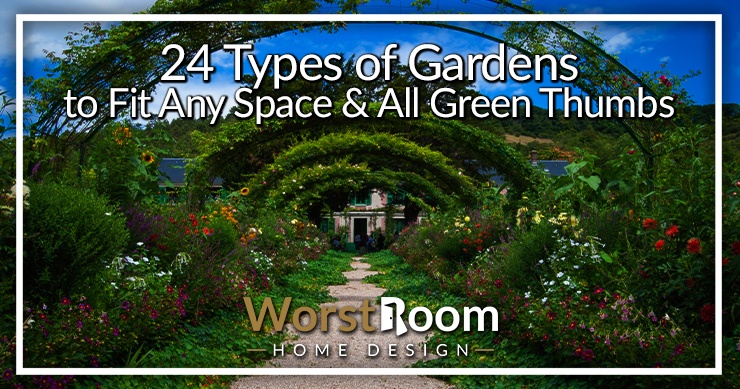
There are various types of gardens suited for the amount of space you have available. From sprawling backyards to tiny terrace gardens, there's a suitable garden type for everyone.
What do you think of when you hear the word "garden"? No doubt you imagine a green space filled with flowers. But flower gardens are, in fact, only one kind of ornamental plantation.
Gardens are not only aesthetically pleasing, but they also promote mental as well as physical health. Furthermore, tending to one's own garden has unmatched therapeutic value. So what's the right kind of garden for you?
Let's check out all the different types of gardens you can grow at your very own home to answer that question.
24 Types of Gardens
Read on to learn about all the garden types so that you can choose the right one for you. The options are many and it really boils down to what you prefer visually and which most represent your own style.
Flower Gardens
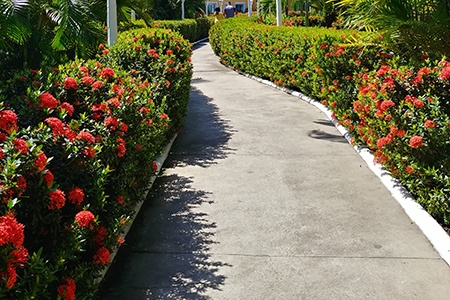
Flower gardens are perhaps one of the most commonly desired types of them all. When the bright pink and red colors bloom during spring, they add a sense of freshness to your home entrance. But in order for your flowers to come out alive and vibrant, you need to take the necessary precautions first.
You must understand that all flowering plants require specific conditions for healthy growth. Before making your purchase, you should read up on which plants can survive in your area's climate.
A good idea is to group the plants based on similar needs. For example, flowering plants that require a certain type of fertilizer, like vermiculite versus perlite, can be grouped and planted together.
Try to maintain a certain color tone when choosing the flowers that will bloom in your garden. It is always a good idea to plant flowers with bright colors such as pink, yellow or red.
These tend to fit in just fine with any garden setting. Another way you can decorate your flowering plants is by grouping them by their types. For instance, you can plant red and white roses on one corner and have red, yellow, and pink and other types of tulips on the other.
Water Gardens
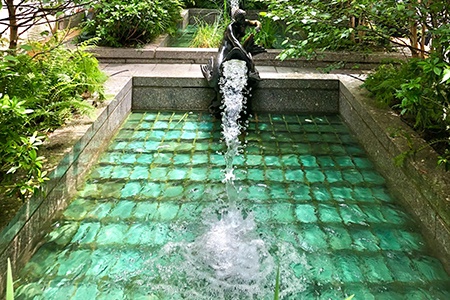
Water gardens are more suitable for areas with a small pond or water body. They don't have to be particularly large, just enough to sustain a small ecosystem. During ancient times, water gardens used to be filled with lilies and other ornaments to inspire calmness in everyone.
While it might be easy to decorate, sustaining ecosystems in a water types of gardens are quite difficult. Since your plants will be growing in water, you will need to ensure there is enough oxygen supply.
Moreover, you need to grow plants that add to the aesthetics as well as those which bring functional benefits. For example, you need to grow oxygenating plants to ensure the cleanliness of the water.
In order to turn the water body into a garden, you will also need to introduce animal life. Try putting in small fish and watch them build their own home. When choosing your fishes, conduct thorough research and invest in fishes that are suited to your pool climate.
You will also need to add rocks and other plants that the fishes can eat on the bed of the water. Make sure you don't buy fish that feed off each other. Get inspiration from the official NOAA Flower Garden, which is the National Marine Sanctuary.
Herb Gardens
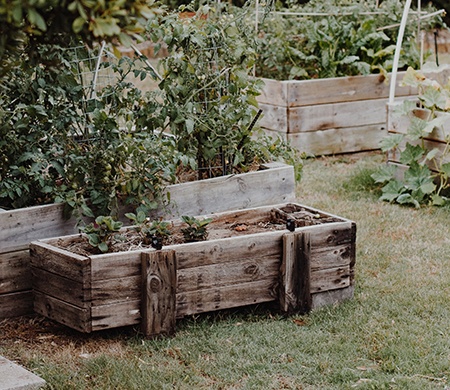
If you're someone who is into cooking with fresh ingredients, you can try to have your own herb garden. These gardens consist of various herbs that are useful in adding flavor to your food. For instance, some common practices are planting mint, thyme, types of basil, and coriander.
Some herbs have very beautiful flowers which give an aromatic fragrance across the area. Planting some lavenders here and there will give your herb garden types the facelift it truly deserves.
Once you have planted a herb and given it all the sunlight and water it needs, there is much less to worry about. These plants tend to grow fast and well without regular checkups. As long as your soil is well-fertilized, your herb should be growing in a healthy manner.
You also need to be wary of bugs with any form of gardening. They'll show up out of nowhere and have you wondering where do spider mites even come from?
When it comes to herbs and fruits, this is a very sensitive case. Invest in some high quality pesticides that will get rid of these fungus gnat bugs and insects away.
Vegetable Gardens

Another widely popular garden type is the vegetable garden. This is usually where the fun is and the gateway to backyard farming. While most vegetable kinds of gardens are colorful due to the good yield of veggies, it has other benefits too!
The first one is — it provides food for you and your family. Investing in the proper gardening of vegetables will save you large costs in the long run. This is mainly because you will need to spend less at the store once your plants start to produce vegetables.
Before you start setting up your own vegetable types of gardens, you must understand that vegetable plants have high requirements. Anyone who fails to meet the survival criteria will experience unsatisfactory yield.
Starting from their choice of pesticides to how much water they can consume, you must know it all before making your selection of vegetable plants.
Indoor Gardens
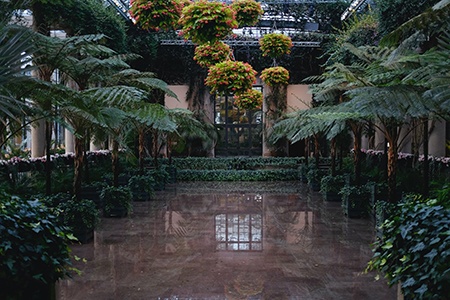
Indoor gardens are perfect for bringing in a refreshing taste of nature within the walls of your home. This adds major aesthetic points to your home interiors. Growing the right kind of plants will enhance oxygen levels within your house.
Since plants photosynthesize to give out oxygen, the air inside your home becomes rich in O2 concentration. As a result, you are able to breathe cleaner air since it is being filtered every day.
When picking out plants for your indoor types of gardens, make sure you're getting those with minimal requirements. It is very important as indoor plants are supposed to require less sunlight than others.
This is what makes them hassle-free and easy to maintain indoors. You must also be careful as to how much water you put in. Too much water can be harmful to the plants. A premiere indoor garden is the US Botanic Garden, which you can visit in Washington, DC, for inspiration.
Tire Gardens

This was a gardening trend that has not lost its appeal ever since it caught on. As the name suggests, you reuse old vehicle tires to make flower beds. This is a perfect idea for the growth of small plants which don't have thick roots.
Be careful with your plant selection, as the wrong plant can take up all the nourishment from the soil, leaving the others to die. Of all the different kinds of gardens, you need to be most careful with plant selection here.
Furthermore, using the tires as a flower bed allows you to play around with the looks as well. Feel free to use your painting kit on the outside of the tires. This lets you get creative with patterns and designs on the outside.
To further enhance the overall look, throw in a few rocks and pebbles. Since you won't have much beauty with these gardens, we suggest you plant some fake flowers to accentuate the refreshing feel of the garden.
Vertical Gardens
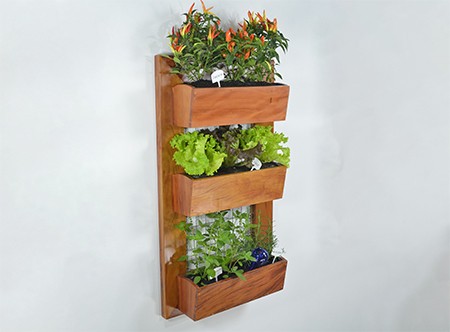
If you have a tall wall on the side of your house or a condo, you can check out vertical gardens. These are usually filled with climbing vegetables that can grab onto something and grow around it. Planting small herbs and flowers will add volume to make it look full and bright.
With all that being said, vertical gardens are not that easy to set up. It takes immense planning and proper watering to ensure the plants grow properly. You should also pick a wall that has access to sunlight in order for the plants to photosynthesize.
Adding certain ornaments here and there will further enhance the appeal of your vertical garden.
Apartment Gardens
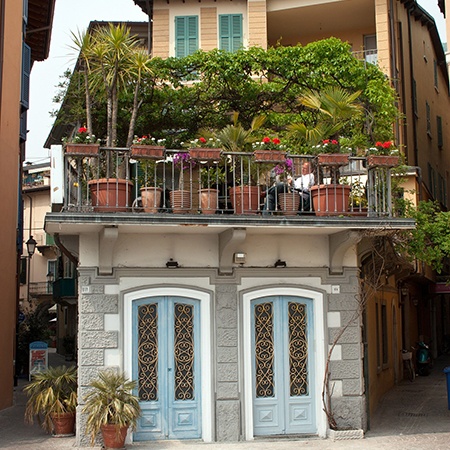
It's hard to describe all of the possible apartment garden ideas that we've covered, but the concept is simple. Whether outdoors on a patio, balcony, or in a small yard, or even indoors, you can still have a garden in an apartment.
What really has to happen to take advantage of the space you're working with is to use inspiration from all of the other types of gardens on this list. You can downsize them, take aspects from each, and combine them into one fantastic, space-saving, efficient apartment garden.
Raised Gardens
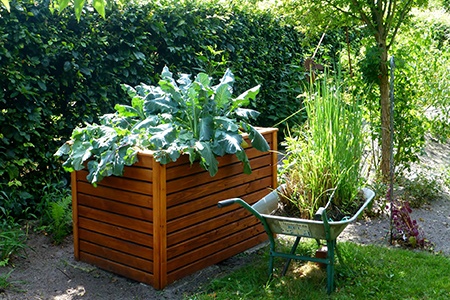
A raised garden is when you create containers, perhaps with pressure treated wood, above the ground but seated on the ground. What this allows you to do is contain the garden, provide it with fresh soil and nutrients, while having the benefit of the soil draining straight into the ground.
You also get the benefit of organization. You can keep vegetables that shouldn't be planted near each other in different raised beds. They also keep you from having to stoop all the way to the ground. You can raise the beds as high as you'd like.
The main attraction here is not the organization, which is fantastic, but how you can always offer your plants the most fertile soil possible. You can tweak the pH balance and fertilizer numbers for every separate container, offering each set of plants exactly what they need.
Community Gardens
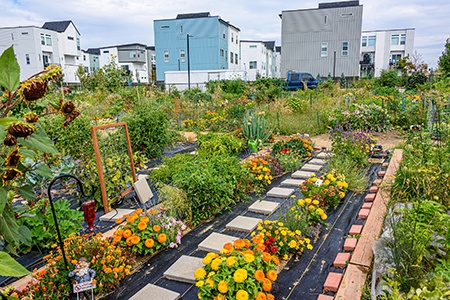
My sister just moved from an apartment complex that had a community garden. These commons are a great place for everyone to share the labor and tend to the crops which can be distributed out amongst the community.
More often than not, though, you don't share the labor and fruits of your efforts. You get to have one portion of the land for yourself, and others have their own. And there's an honor system and trust you have to have with the community that nobody will harvest your vegetables and fruits while you aren't there.
Another beneficial aspect to a community garden is that it brings people together to socialize and become excited about gardening, which they might not otherwise have an opportunity to enjoy. Growing vegetables and building friendships is what these types of gardens are all about.
Zen Gardens
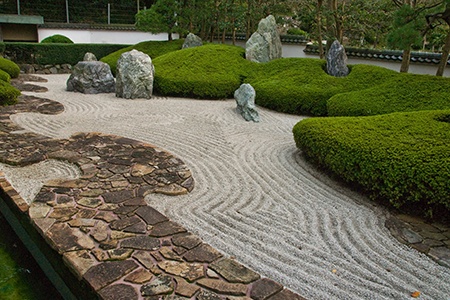
Zen gardens don't exist to grow food. They're something to take care of and make it a meditative process. They typically have various big rocks in them, ones you can sit on if you like, with the rest of the ground covered in coarse sand.
There are special types of rakes called bow rakes that are used to smooth the sand and create patterns in it. Some zen gardens do have bonsai and other plants around the borders, or will have wooden planks for you to walk along, where you can have flower beds along side.
If you get the atmosphere right, these gardens are very relaxing and enjoyable. They create a nice sanctuary for you to escape the hustle and bustle of your daily life.
Xeriscaped Gardens
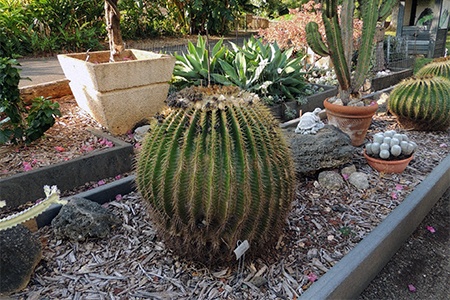
Xeriscaped garden types are similar to zen gardens only in the way they're created. Xeriscaping is a type of landscaping used for areas where drought is common enough that it's hard to keep flowers and vegetables alive.
Xeros means "dry" in Greek, and that's what we're talking about... dry landscaping. Much of the ground will be covered in small stones and pebbles or other types of landscaping rocks or even sand, while the plants will often be those that can store water for themselves, like cactus and succulents.
Basically, whatever trees, shrubs, ground covers, and other plants you install, make sure they're all drought-tolerant varieties. You'll only pursue this type of gardening if you live in a very dry region. Otherwise, there's no point because it's frankly not that attractive.
Succulent Gardens
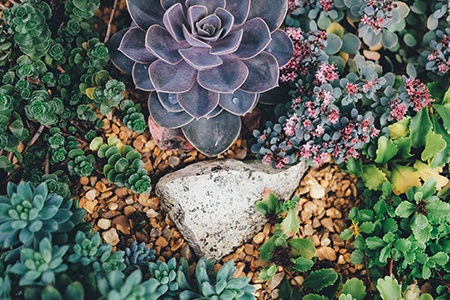
Succulent gardens are created largely out of and to bring attention to your collection of the various types of succulents. Knowing how to propagate succulents is going to be important for you to fully flesh out your garden. Otherwise it'll be fairly expensive.
You can create a succulent garden outdoors, or you can have them indoors in pots or even in a terrarium. Many people don't try to fill an entire large area full of these plants, but will create a bed of pebbles.
These plain pebble areas help maintain moisture levels while juxtaposing against the bright green of the succulents, drawing even more attention to them without causing you to need triple or more of them.
Garden Mazes
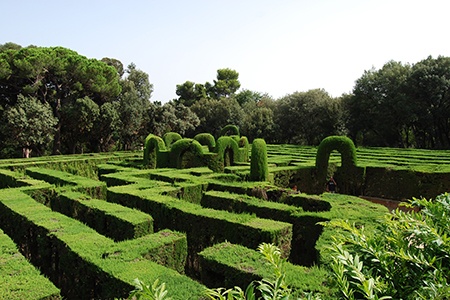
You've heard of hedge mazes, and this is the same concept but created out of gardens instead. The result is that you create a labyrinth that is fun to get lost in and then find your way back out.
The benefit of it being gardens instead of hedge bushes is that they'll be lower to the ground so you can still see which direction you should be working towards and won't stay lost for too long.
In the worst case scenario you can just walk through the gardens to exit, which you can't do with hedges unless you want to damage them.
Botanical Gardens
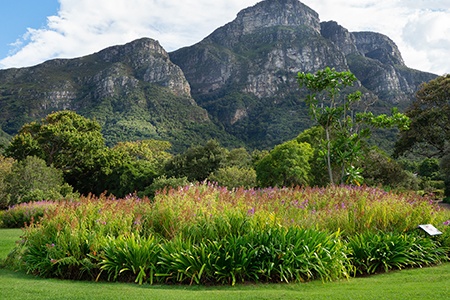
If you live near a university, you've probably been to their botanical gardens. They're created with the sole purpose of housing as many different types of flowers, trees, vegetables, and other plant life as possible. This ultimately means you'll enjoy seeing a lot of insect types too.
What's nice about touring a botanical garden is you'll get to see a lot of plants that aren't native to the region that are surviving due to a lot of effort by the caretakers, who are extremely talented professionals.
Greenhouse Gardens
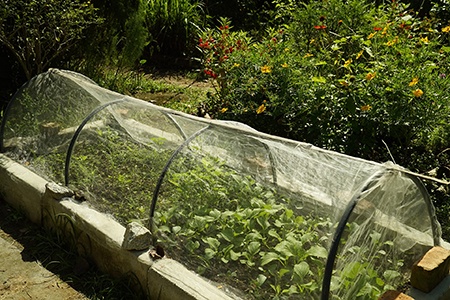
If you're aware of what a greenhouse is then you've probably already figured out what greenhouse types of gardens are. Basically, you're going to grow your garden within a greenhouse, whether into the soil below or in raised beds or in pots and containers.
The advantage to this is controlling the temperature and humidity levels so you can grow vegetables and plants out of season. If you can get over the financial barrier, this is a great way to enjoy your hobby all year around. They don't have to be gigantic. There's mini-greenhouses available.
Fairy Gardens
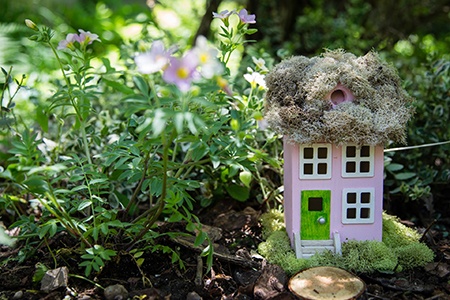
This is just a fun one to mention. People who are into fairy garden types get really into it. They'll create small doll-house type homes, and go through a lot of effort to decorate and paint them. These are very small to fit the scale of a fairy or gnome.
Once these houses are built and painted, they're either installed on the ground or in containers and then fantasy landscapes are created around them with types of moss, clovers, a chamomile lawn, bonsai, and other small plants you'd find in the forest or fields.
Tropical Gardens
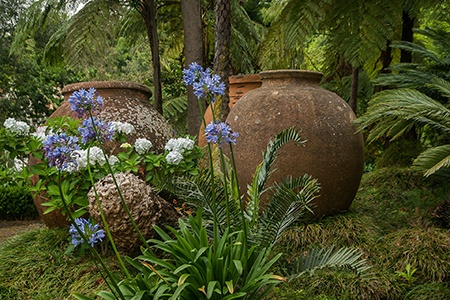
Tropical gardens are amazing but should probably be left to gardeners with a lot of experience. It's not just maintaining the plants but also the landscaping. You'll undoubtedly want to install a waterfall and pond with a pump, and have a school of fish living within, too.
But the main attraction are the plants which evolved to grow in specific climates. Those who want tropical gardens tend to not live in those climates, which mean the plants need a lot of specific care to stay healthy.
For instance, you'll absolutely want to install an irrigation system. There's plenty of alternatives to underground sprinkler systems you can look into if you want to keep it cheaper, but it's not something you can skip out on. You may be able to rig it up to your pond to cycle nutrients.
Ornamental Grass Gardens
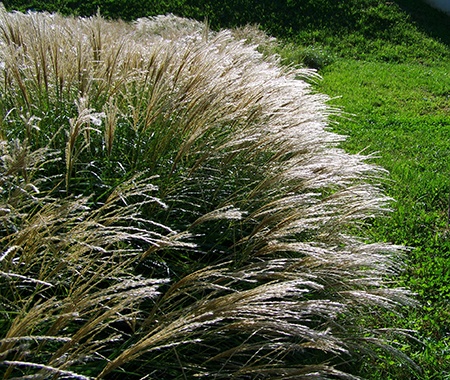
Ornamental grass are taller bundles of decorative grass that you purposefully allow to grow to very large sizes. We're talking about options like feather reed grass, fountain grass, blue oat grass, little bluestem, and others in these types of gardens.
You can choose what to do with the rest of the available ground, though many grow regular grass and keep it well tended and mowed. This makes it simpler to walk the grounds and enjoy the ornamental grass without distracting from it. Mulching is an acceptable choice, too, whether with mulch or mulch alternatives.
Container Gardens
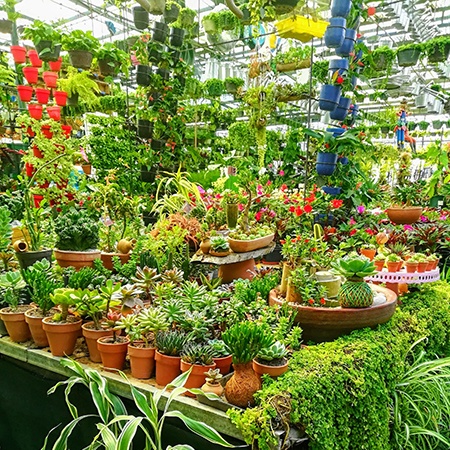
Whether you don't have the space, would like to have an indoor garden, or want to bring your garden up onto the back deck or patio, container gardens are a perfect choice for you. Containers can be pots, barrel halves, tubs, and troughs, as examples.
Like raised bed gardens, you can organize them as you like so that plants that thrive next to each other can share a container. You can also keep the soil well-watered and well-drained easily, while refreshing it with nutrients to make sure it's very fertile.
These are really fun, because they almost always involve a trip to the local nursery and shopping for the most colorful and exciting flowers that catch your eye. From there, transplanting the flowers is a piece of cake and you get some immediate gratification.
But don't think it's all about flowers. You can grow vegetables, herbs, and spices all the same. Just make sure the containers are of the right size for whatever you're growing.
Therapeutic Gardens
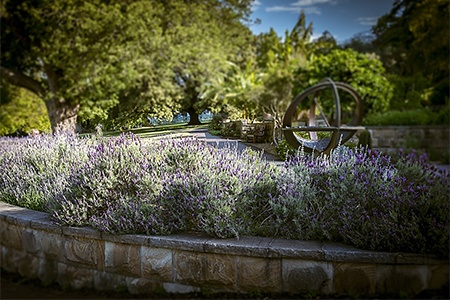
These types of gardens exist solely to comfort and inspire healing to those dealing with stress and other issues. Therapeutic gardens focus on calming scents like lavender and chamomile, while emphasizing beauty and a diverse selection of colorful flowers and plants.
The colors are chosen by what feelings they inspire, like peace and tranquility instead of urgency, hurry, anger, and so forth. They aren't simply for walking through and exploring visually and with our noses, but we can also work in the gardens to help tend for the plants and create meaning in our lives.
Patio Gardens
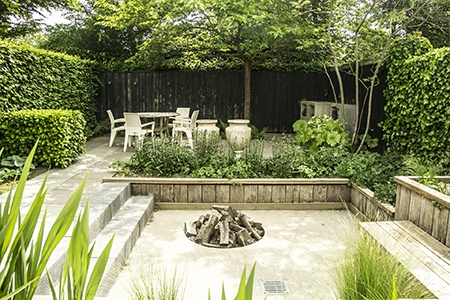
Patio gardens are a broad concept that can entail something as simple as containers on the porch to a patio surrounded by a garden, a koi pond with any types of koi fish in it, a zen garden, and anything else from this list.
Really the idea is to simply not write off your patio or patio surface alternatives as a place that can't have plants all around. That's simply not true and if having a garden closer by will increase your enjoyment of your patio, then by all means do it!
Bamboo Gardens
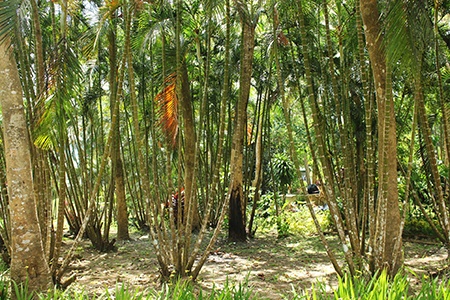
Bamboo gardens can be created with any of the types of bamboo, but with an emphasis on how dense you allow it to be. You can grow it in containers or right in your garden, along the path, along the borders, or dispersed throughout.
If you want it dense then you should grow bamboo around the borders of your garden, because otherwise you'll block too much sunlight from reaching the other plants on the ground in the midst of the bamboo.
Hedge Gardens
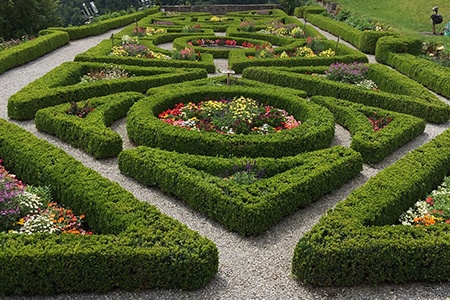
Whether for privacy or for decoration, a hedge garden is quite the experience if well maintained. Typically they'll have paths to walk through, with various styles, sizes, heights, and types of hedges grown throughout.
If the owner is really talented he or she may even shape the hedges like statues, which is a really fun sight to behold. If you use hedges as the edgers for flowerbeds, things get even more exciting. Toss in some other shrubs and you'll have an amazing, green paradise.
Types of Gardens for Every Personality
Make sure you pick an area with decent sunlight and remember to water your plants when appropriate. Don't over do it!
Knowing all the different types of gardens opens your world up to new possibilities. We hope this article helps you to pick and choose which type you can accommodate in your current setting.



